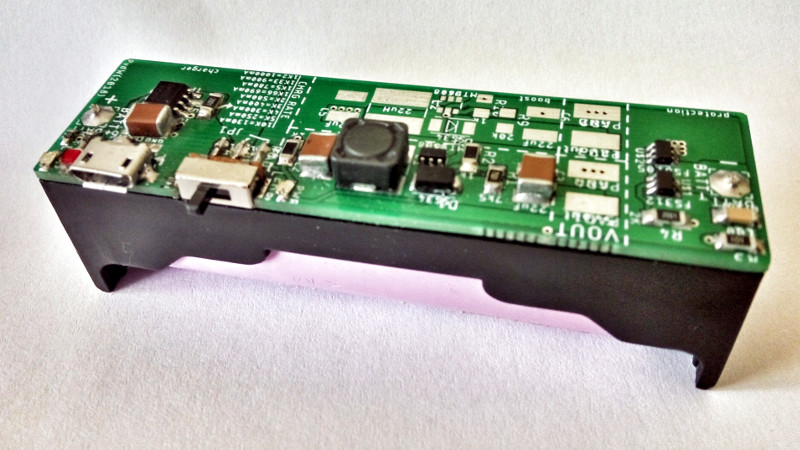We’re all used to battery booster packs containing a Li-ion or Li-poly cell and a little inverter circuit, they are a standard part of 21st century daily survival for those moments when smartphone battery lives don’t perform as advertised. But how many of us have considered what goes into them, and further how many of us have sought to produce the best one possible rather than a unit built at the lowest price?
It’s a course [Peter6960] has followed, producing a PCB that sits on the back of an 18650 cell holder. It follows the work of [GreatScott] in particular in its use of the TP4056 charger, MT3608 boost converter, and FS312F protection ICs. Many commercial modules omit any protection circuit, and the FS312F is of particular interest because it has a low 2.9V cut-off voltage that should lengthen the life of the cell. Files for the PCB can be found in a zip file hosted on Google Drive.
You might think that there was nothing new that could be learned about a Li-ion battery booster, but it’s always worth a look at a well-executed piece of work. We noticed he refers to Li-poly cells while using what appears to be a Li-ion 18650 cell. Most likely this is merely an oversight.
There is a lot to know about the characteristics and safety of the lithium-chemistry rechargeables, you may find [Sean Boyce]’s article on the subject to be an interesting read.
















Hey Jenny,
shouldn’t that be “it has a high 2.9V cut-off voltage”? I seem to remember cut-off voltage is usually more agressive in cheap battery packs, around 2.1 – 2.4V and could ruin batteries in the long run. Trade-off between how much juice you’re willing to extract and overall battery life…
Cheers,
John
I would phrase it “it has a low voltage cutoff of 2.9v”
Also, it’s not an inverter circuit, since it doesn’t produce AC as an output
Nobody says this. It’s irrelevant to the type of cut-off voltage. We call it a low voltage cut-off because it’s just below the limit of the voltage required of a functioning circuit. If you phrase it high [voltage] cut-off, you seem to imply that’s the point beyond the highest voltage it can see before shut down.
Nobody also says it the way the article phrased it
Funny how people can speak for everyone
Nope, look at the plot of a battery charge vs voltage. You want to cut the charge off when it reach around 4.2 V because the charge is complete. Otherwise you overcharge it and it may explode.
The other way around, you want to disconnect the battery li ions and lipo if it reach a depletion (usually around 2.4 V) in order to avoid irreversible damage to the battery and again, explosion.
Yeah Li ion and lipo are fun :-) check some video on YouTube
There is one nice chip, MP3401, it’s single cell charger, step-up converter for 5V 1A and has overdischarge protection built in. It’s in those aluminium powerbanks you can get for 2 bucks on eBay.
I don’t think it does, it will simply stop boosting the voltage but the cell is still connected to the output, some of these modules have room for a DW01 DOT23 protection IC and a 8205A MOSFET which are unpopulated, the better power banks have those.
If you leave the powerbank connected to a simple LED, it will drain the cell flat.
Ok if used for charging a cellphone or other electronic devices as it will stop charging when the voltage drops below 5V.
Personally I think buck-boost or SEPIC of some some sort with a really low dropout voltage would be good, providing a 3.3V output. You don’t really need 5V for anything these days, you’re really better off designing everything for 3.3V instead of putting 3.3V regulators on every device.
Btw I also just learnt about the existence of FS312F which is pin compatible with the DW01…time to order a whole bunch to swap them out..SOT23 soldering fun..
cut off rate is sounds a little sceptical but im not opposing a better current for an 18650 ion battery i am so expecting that battery that gives me that power flow of the holy grail!!!